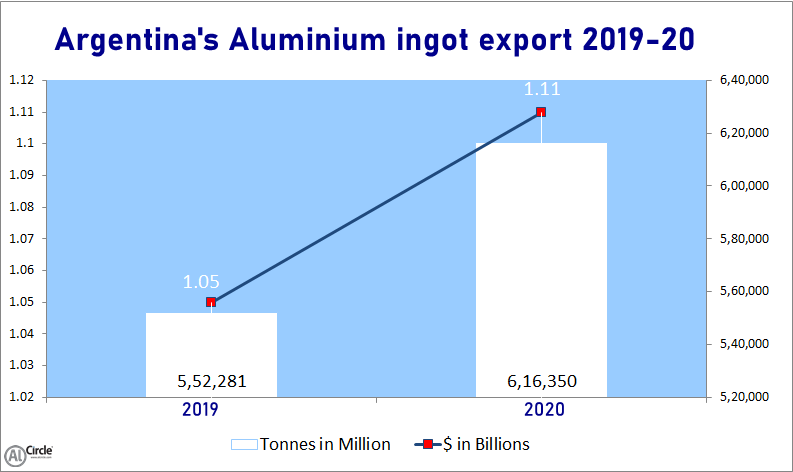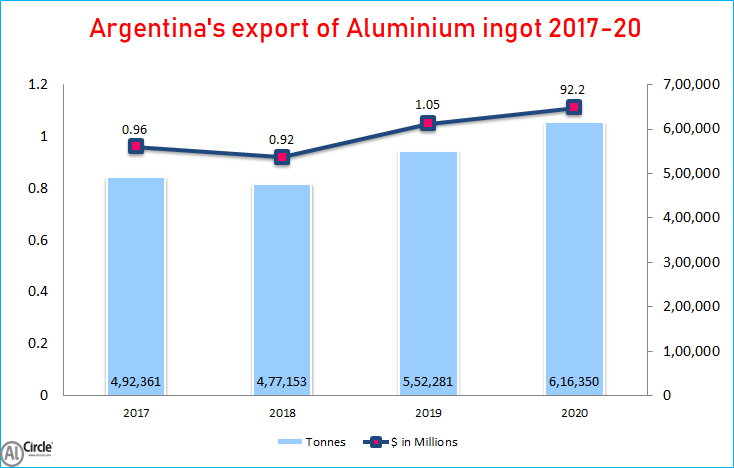

The economy of Argentina is an upper-middle-income economy for the fiscal year 2019 according to the World Bank. It is the second-largest in South America behind Brazil. Argentina benefits from rich natural resources, a highly literate population, an export-oriented agricultural sector, and a diversified industrial base. Early in the twentieth century Argentina had one of the ten highest per capita GDP levels in the world, on par with Canada and Australia and surpassing both France and Italy.
The major industries of the driving the economy of the Latin American nation are food processing, beverages, motor vehicles and auto parts appliances, electronics, machinery and equipment; chemicals, pharmaceuticals, glass steel, aluminium, cement, textiles, tobacco products, publishing, furniture and leather. Aluar is the only aluminium smelter in Argentina and one of the largest in South America.
{alcircleadd}
Argentina’s aluminium ingot export in 2019-20 has risen to a $ billion market, as the total export volume during the period stands at 1.168 million tonnes and the revenue income to remain at $2.16 billion.

In 2017, the nation’s aluminium ingot export stood at 492,361 tonnes and the foreign revenue generation reflected at $962.58 million, whereas in 2018 the export showed a dip 3.08%, as the total export recorded was 477,153 tonnes and the revenue income stood at $926.24 million.
Argentina’s export of aluminium ingot in 2019 demonstrated growth by 15.74%, as the export volume stood at 552,281 tonnes and the foreign revenue generated recorded at $1.05 billion. The export volume for 2020 has been projected at growth by 11.60%, as the export volume to reach 616,350 tonnes and the revenue to surge at $1.11 billion.
The major importing nation for Argentina’s export of Aluminium ingot is Belgium, Brazil, China, Israel, Italy, Japan, Mexico, Spain, USA, etc.
Responses








